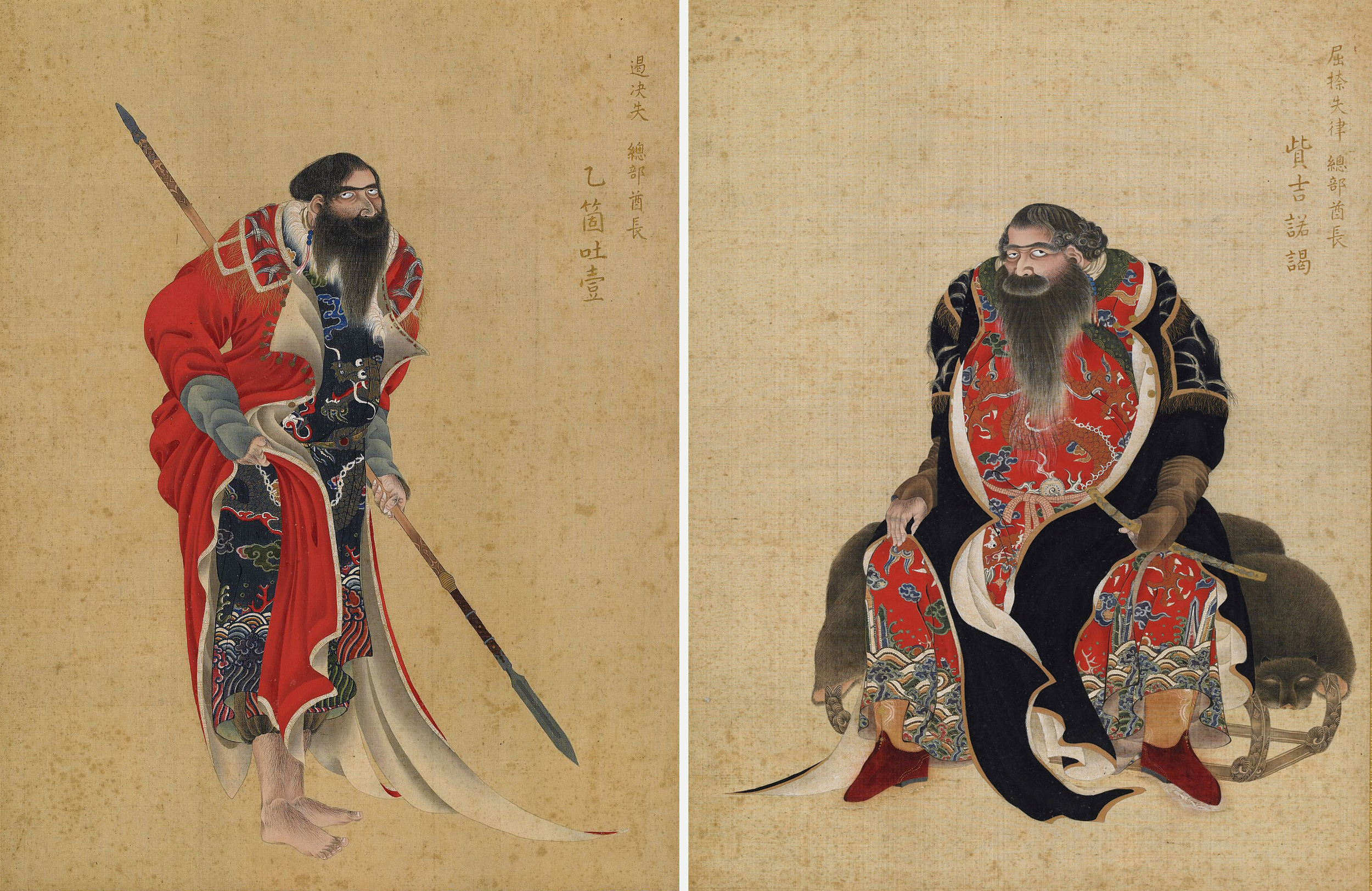Issue:
February 2024 | Letter from Hokkaido
The campaign to return Ainu remains to their rightful owners is gathering pace amid rising interest in Japan’s indigenous people

The recent discovery at the Museum of Fine Arts and Archeology of Besancon, France, of portraits depicting indigenous Ainu chieftains is not only a historical mystery. It also shedding light on the more sensitive issue of Ainu remains taken in the 20th century by Japanese academics in the name of research, but which are still held in museum storerooms despite growing pressure to return them for proper burial.
A Kyodo News report just after the New Year focused on the quest by former Hokkaido Shimbun reporter Riki Kato to find out why a series of paintings, completed in 1790, of 12 Ainu chieftains who aided Japanese forces in suppressing Ainu uprisings in 1789 had disappeared from Hokkaido sometime in the 19th century.
Eleven of the paintings resurfaced in the Besancon art museum warehouse in 1933. How they ended up on the other side of the world remains the subject of speculation. Kato told Kyodo he thought the most likely explanation was that a French missionary from Besancon named Eugene-Emmanuel Mermet-Cachon, who lived in Hakodate in the late 1800s, had received them as a gift from the Hakodate city government and passed them on to his brother, who was a curator at the museum.
Kato hopes the paintings will eventually be returned to Hokkaido and put on public display. But while the story has generated debate among anthropologists, art historians, and museum curators about the proper course of action for returning Ainu art, what to do about Ainu human remains being held by Japanese museums is a much trickier, and more politically charged, question.
At present, 17 museums in Hokkaido, plus the Tokyo National Museum, possess the remains of 143 Ainu people. While a process now exists for identifying and returning human remains, it requires an application from people who can prove that the remains are those of their ancestors.
Written records proving the remains’ identity are sparse and incomplete, and could contradict evidence submitted by Ainu groups. DNA testing can take time and, in any case, the results do not always provide a definitive answer.
Later this year, Hakodate hopes to have completed the procedures necessary to return Ainu remains currently being held at a local museum. But what happens to other remains that can’t be returned to their descendants?
That is where the Memorial Site at the Upopoy National Ainu Museum in Hokkaido comes in.
Ainu remains, as well as burial items that were excavated, often without the permission of local Ainu communities, more than a century ago are held by museums throughout Japan. In 2014, the central government decided that they would be stored at a memorial site near Upopoy until they could be returned to their rightful owners.
As anyone who has visited Upopoy knows, the memorial site, though in a very nice location, is a bit of a hike from the main Upopoy Museum. The museum itself is the subject of controversy. It has been praised by its supporters as an unprecedented effort by Japan to educate the public on Ainu culture and history. But it has been derided by critics as “Ainu-land”, a quasi-theme theme park (complete with gift shop) that treats Japan’s indigenous people as an exotic spectacle, aiming to give visitors a pleasant, but intellectually light, experience.
The nearby memorial site is mentioned in the official literature, but it comes across as a place that Upopoy officials are reluctant to mention when visitors buy their admission tickets.
On my first trip to Upopoy, I asked the smiling guide where the memorial was and how to get there. His smile quickly disappeared as he muttered “Wakarimasen”, shutting down all further conversation. The official tour I was on, of course, did not allow anyone time to make the hike to the site and back before the bus departed.
The sad thing is that this kind of official attitude is increasingly at odds with the curiosity that people, especially younger people, in Hokkaido and elsewhere have towards all aspects of Ainu culture now that it is beginning to enter the mainstream.
The clearest current example is the film Golden Kamuy, a live-action film adaptation of Satoru Noda's hit manga about the struggle for Ainu gold reserves in Hokkaido at the end of the Meiji era. The Japanese hero, Saichi Sugimoto, goes searching for stolen gold and is saved by an Ainu girl after being attacked by a brown bear. The girl, whose father had been killed by the man who took the gold, joins Sugimoto in his quest to locate the treasure.
The film earned praise from Ainu scholars for its attempt to work with Ainu groups to ensure a degree of cultural sensitivity that had been lacking in previous films. Historians will no doubt find lots of details in the film to criticize, and cinematic portrayals of the Ainu that are more positive and inclusive than in the past are no substitutes for action.
Kato’s campaign to have the Ainu paintings in France returned to Hokkaido – possibly to be put on temporary display – could bear fruit soon. But identifying Ainu remains held at museums around Japan, and returning them to their descendents in Hokkaido, will be a slow, emotionally wrought and politically controversial process for years to come.
Eric Johnston is the Senior National Correspondent for the Japan Times. Views expressed within are his own and do not necessarily reflect those of the Japan Times.

